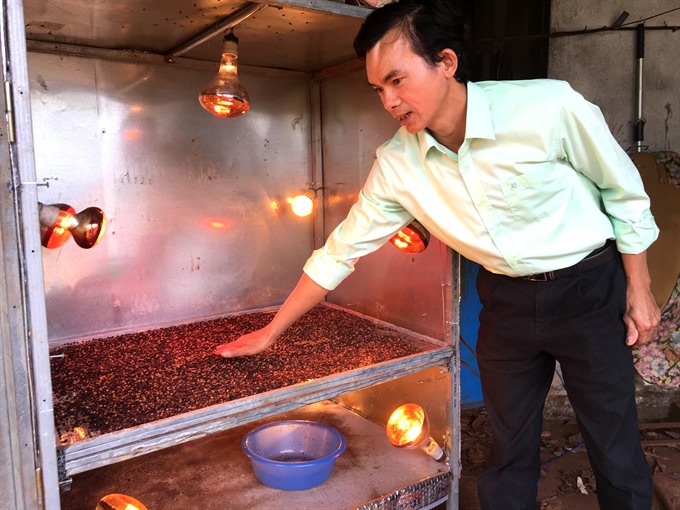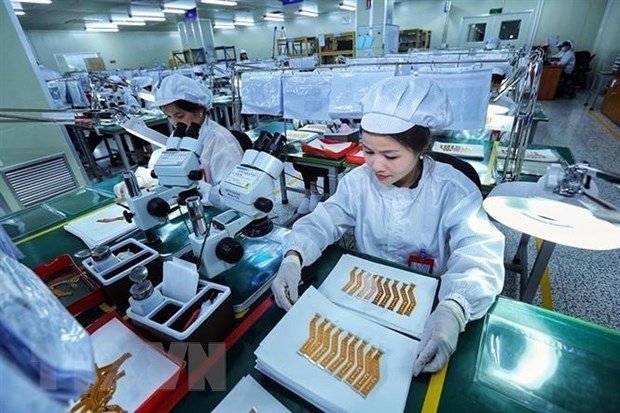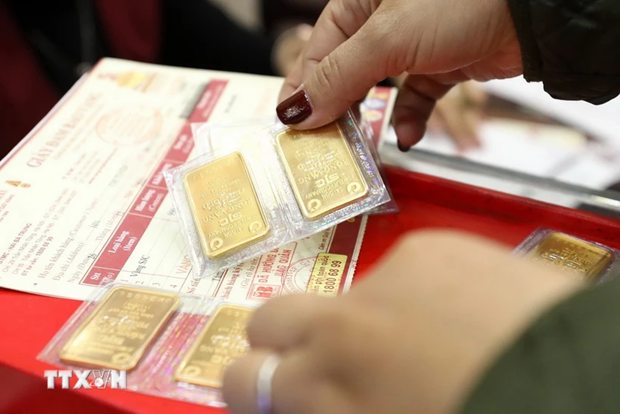 Society
Society

A self-taught mechanic in the Central Highlands, where the bulk of Vietnamese pepper is grown, invented an infrared drying machine that bring great benefits to spice farmers in the mountainous area still mired in difficulties.
 |
| Trần Quang Sơn with the infrared drying machine for organic pepper in Gia Lai Province. — VNA/VNS Photo Hồng Điệp |
GIA LAI — A self-taught mechanic in the Central Highlands, where the bulk of Vietnamese pepper is grown, invented an infrared drying machine that brings great benefits to spice farmers in the mountainous area still mired in difficulties.
Trần Quang Sơn, currently residing in Nam Yang Commune, Đắk Đoa District of Gia Lai Province, used to be a mechanic but later dedicated most of his time to pepper cultivation.
Years ago, Sơn saw that other pepper farmers in the area were caught up in the rush to push for higher output, applying an outrageous amount of chemical products without any concern for potential environmental and health risks.
They did succeed, but only for a short time. The pepper plants indeed posted higher yields initially, but died out en masse after just a few years, and left high pesticide residues in the land and water.
Realising this was not sustainable, Sơn dreamt of clean pepper, grown free of pesticides and other chemical contents, and dried by a functional yet affordable drying machine to help products last longer and fetch better prices.
He originally planned to buy out drying technology from a local firm but the price they demanded was simply too much, and being a seasoned mechanic, he was confident he could develop a functional drying machine at a significantly lower cost.
In 2007, Sơn started his research into preserving the colour and taste of the pepper in line with international standards.
He finally settled on the infrared method, but it still took him six years to develop the machine, as it requires organically grown pepper to test, which was lacking in the region.
“The infrared drying method ensures that the original colour of the pepper will be mostly unchanged, but the fruits must be clean, any pesticide traces would become really visible after infrared treatment,” Sơn told Vietnam News Agency.
Frustrated with dearth of clean raw materials, in 2012, Sơn decided to grow 1,500 pepper plants on his 1ha field, organically. At the time, he collected scraps and thrown-away machine parts, and messed around with infrared light bulbs and temperature sensors to assemble various ‘beta’ versions of his machine.
“Each pepper season, I only had around 3-5 months to develop and tweak the machine. When my experiment failed, I had no choice but to wait until the next season,” Sơn said.
Compared to neighbouring farms’ pepper, without growth-promoting substances, Sơn’s crops didn’t come close to achieving the same output. However, the fruits were totally safe and perfect test subjects for his machine.
On the market, a drying machine could easily cost a billion đồng – a forbiddingly high price for most farmers, but Sơn’s version is just VNĐ5 million (US$218). In addition, it helps to save electricity as the machine possess the ability to turn itself off when the drying process has been completed.
The success of the drying machine, in combination with the organic model, has attracted pepper growers in the area, and an association was established, an initiative highly appreciated by Nguyễn Xuân Tùng, Chairman of the Nam Yang Commune People’s Committee.
The association member farming households were amongst the rare ones enjoying ‘calm eyes in the storm’ while their fellow inorganic growers struggled with plunging prices.
Ngô Văn Tiên, head of the Clean Pepper Production and Trade Association of Nam Yang Commune, said most farming households in the association own the machines and the results have been more than encouraging.
The farmers’ quality products are highly sought after, with countries from as far as South Korea and the UAE arriving in flocks with attractive bids.
However, the output hasn’t met the demand, so the association is looking at expansion, with the organic model still a prerequisite for willing households.
Sơn said he is willingly contributing his part to the promotion of the image of Vietnamese pepper to the world, by granting free drying sessions and technology transfer for organic growers.
Currently, each kilogram of dried organic pepper using Sơn’s machine could sell for VNĐ500,000, more than double the price of the semi-organic variety, and nearly seven times higher than the common inorganic products.
The latest version can only dry around 20kg for each batch of semi-organic pepper in about 8-10 hours, while the drying process could take up to 14 hours for organic varieties (maximum 3kg for each batch). Sơn is still looking for ways to boost the machine’s capacity.
Lương Văn Thông, a pepper grower in the Nam Yang association, swore by the crude-looking but efficient machine.
“I see that the machine functions really well, especially in its capability to maintain the original colour of the pepper,” Thông said.
“I am registering for a patent of the machine and submitting it to the Gia Lai Province’s technology innovation competition this year,” Sơn said.
“The machine can help Gia Lai farmers confidently bring their products to the global market.” — VNS









